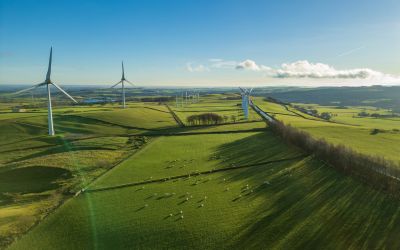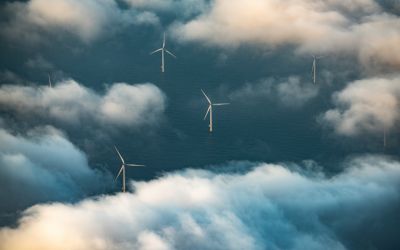Investing in carbon capture and storage nature’s way
Time to Give Forests, Mangroves, Peatlands and Climate-Friendly Agriculture a Bigger Role in Combating Climate Change, says UNEPWorld Environment Day 2009 - Your Planet Needs YOU!
Time to Give Forests, Mangroves, Peatlands and Climate-Friendly Agriculture a Bigger Role in Combating Climate Change, says UNEPWorld Environment Day 2009 - Your Planet Needs YOU!
Boosting investments in the conservation, rehabilitation and management of the Earth's forests, peatlands, soils and other key ecosystems could deliver significant cuts in greenhouse gas emissions and avoid even more being released to the atmosphere, a new report by the UN Environment Programme (UNEP) says.
The report calls for the adoption of a comprehensive policy framework under the UNFCCC for addressing carbon management across all ecosystems.
Parties currently meeting in Bonn are starting to heed this call.
Achim Steiner, UN Under-Secretary-General and UNEP Executive Director, said: "Tens of billions of dollars are being earmarked for carbon capture and storage at power stations with the CO2 to be buried underground or under the sea."
"But perhaps the international community is overlooking a tried and tested method that has been working for millennia, the biosphere. By some estimates the Earth's living systems might be capable of sequestering more than 50 gigatones (Gt) bof carbon over the coming decades with the right market signals," he added.
"This is also in line with UNEP's Green Economy initiative as for the same dollar, euro, peso or yuan not only are we combating climate change, but potentially delivering additional economic, environmental and developmental benefits from improved water supplies, soil stabilization and reduced biodiversity losses alongside new kinds of green jobs in natural resource management and conservation," he added.
UNEP's Rapid Assessment report 'The Natural Fix? The Role of Ecosystems in Climate Mitigation' is released to mark World Environment Day 2009, whose global hosts this year are the Government and people of Mexico.
The report comes just under six months before the crucial UN climate convention meeting in Copenhagen, Denmark, where governments need to Seal the Deal on a new, forward-looking treatyKey Messages from the Report;
- The adoption of a comprehensive policy framework under the UN Framework Convention on Climate Change (UNFCCC) for addressing ecosystem carbonmanagement would be a very significant advance;
- It is vital to manage carbon in biological systems, to safeguard existing stores of carbon, reduce emissions and to maximise the potential of natural andagricultural areas for removing carbon from the atmosphere;
- The priority systems are tropical forests, peatlands and agriculture. Reducing deforestation rates by 50 per cent by 2050 and then maintaining them at this level until 2100 would avoid the direct release of up to 50 Gt C this century, equivalent to 12 per cent of the emissions reductions needed to keep atmospheric concentrations of carbon dioxide below 450ppm. • Peatland degradation contributes up to 0.8 Gt C a year, much of which could be avoided through restoration;
- The agricultural sector could be broadly carbon neutral by 2030 - equal to 6 Gt of CO2 equivalent or up to 2 Gt of carbon if sustainable management practiceswere widely adopted;
- It is essential that climate mitigation policy is guided by the best available science concerning ecosystem carbon, and decisions should be informed by the overallcosts and benefits of carbon management;
- Developing policies to achieve these ends is a challenge: it will be necessary to ensure that local and indigenous peoples are not disadvantaged and to considerthe potential for achieving co-benefits for biodiversity and ecosystem services;
- Drylands, in particular, offer opportunities for combining carbon management and land restoration.
Barney Dickson and Kate Trumper of the UNEP-World Conservation Monitoring Centre, which has spearheaded the compilation of the report in collaboration with some 20leading experts, said: "While more research will be needed to fully capture the carbon and livelihood opportunities from drylands, it is already clear that there is a potentially a big bang for your carbon buck."
"Their large area means that total carbon potential is high and the often degraded soils means extra carbon could boost agricultural productivity and incomes in some of the poorest parts of the world," they said.According to the report, recent estimates indicate that human activities are currently responsible for global carbon emissions of around 10Gt.
The research indicates that there may be scope for tackling 15 per cent of these - perhaps even more - through managing land use changes and carbon in ecosystems.
Tropical forests hold the largest terrestrial carbon store with an annual global uptake of around 1.3 Gt of carbon, or about 15 per cent of the total carbon emissions resulting from human activities.
Global tropical deforestation rates are currently estimated to be as high as 14.8 million hectares per year (about the size of Bangladesh), while deforestation is responsible for nearly one-fifth of the global greenhouse gas emissions - more than the entire transport sector.
Clearing of tropical forests may release an additional 87 to 130 Gt by 2100, corresponding to the carbon release of more than a decade of global fossil fuelcombustion at current rates.
Reducing deforestation rates by 50 per cent by 2050 and then maintaining them at this level until 2100 would avoid the direct release of up to 50Gt of carbon this century.
Conventional logging techniques damage or kill a substantial part of the remaining vegetation during harvesting, resulting in large carbon losses.
Improved logging techniques can further reduce carbon losses by around 30 per cent compared to conventional logging techniques.
Forests around the world act as powerful carbon sinks: those in Central and South America are estimated to take up taking up around 0.6 Gt C, African forests somewhat over 0.4 Gt, and Asian forests around 0.25 Gt.
The potential to enhance carbon capture and storage in boreal forests - which stretch across Canada, Russia, Alaska and Scandinavia - is low.
But they are the second largest stock of carbon, which could be lost to the atmosphere via increased numbers of fires, draining of peatlands, logging and mining.
Temperate forests in Europe and North America have been expanding over recent years - in Europe they are estimated to be capturing and storing between seven and 12 per cent of Europe's emissions. Further reforestation and management could enhance this further.
The agricultural sector has the largest readily achievable gains in carbon storage if best management practices - such as avoiding turning over the soil and using natural nutrients like compost and manure - were widely adopted.


_400_250_80_s_c1.jpg)


